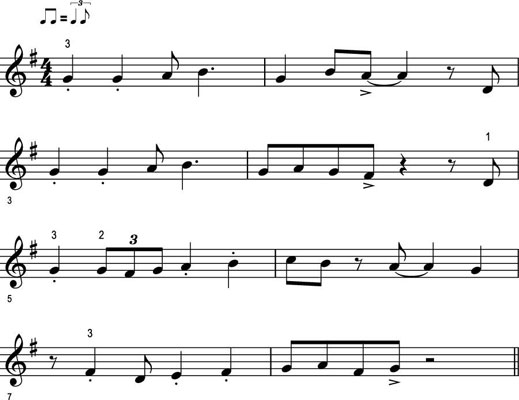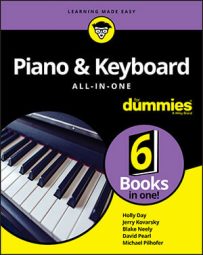The true spirit of jazz has always been improvisation, which makes identifying the actual construction of jazz most difficult. The goal in jazz is to create a new interpretation of an established piece (called a standard), or to build on an established piece of music by changing the melody, harmonies, or even the time signature. It’s almost like the point of jazz is to break away from form.
The closest way to define how jazz is constructed is to take the basic idea behind blues vocalizations — the call-and-response vocals — and replace the voices with the various instruments that make up the jazz sound: brass, bass, percussion (including piano), and wind instruments, along with the more recent inclusion, the electric guitar.In Dixieland jazz, for example, musicians take turns playing the lead melody on their instruments while the others improvise countermelodies, or contrasting secondary melodies, that follow along in the background.
The one predictable element of music in the jazz genre — excluding free jazz, where no real discernible rules exist but jazz instrumentation is used — is the rhythm. All jazz music, with the exception of free jazz, uses clear, regular meter and strongly pulsed rhythms that can be heard throughout the music.
Jazzing it up
All the legendary jazz pianists use tried-and-true musical tricks from time to time to freshen things up. Borrow these tricks yourself:-
Chord substitutions
-
Swing rhythm
-
Syncopation
-
Knowledge of scales
-
Knowledge of chords
-
Nickname like Duke, Bird, or Cool Cat
It’s up to you
It’s time to be creative. Improvisation is perhaps the most important element of jazz music. It can be literal improvisation, where you (the performer) make up your own rhythms and riffs, or implied improvisation, where the music is originally written in a way that just sounds improvised.The easiest way to improvise is by changing the rhythm of a melody. For example, take the simple quarter-note melody of “Yankee Doodle” and transform it into a swingin’ jazz tune by adding swing eighth notes, syncopation, and a well-placed rest now and then to keep things cool. Listen to "Yankee Doodle" swings in Book IV, Chapter 2, Audio Track 94.

Substituting chords
Few jazz compositions use the standard major and minor chords throughout. In fact, few jazz pianists play the original chords written in a song. Instead, they break the rules and substitute new chords to liven up otherwise simple melodies.Check out this the well-known children’s song “Merrily We Roll Along.” As you play it, notice the simple chord progression of C-G7-C.

Even “Merrily We Roll Along” can sound not-so-childish with the use of chord substitution. The idea is to find a more interesting chord progression from I to V7 to I. Try the following options:
-
Use major scale tones for chord roots. Move up the scale from C to G7, building triads on each successive scale note.

-
Use black and white keys for new chord roots. Move up in half-steps, building chords on each new root note.

-
Move up in fourths. Start a chord pattern in measure 2 by playing an Em7, then move up a fourth and build a seventh chord on each new root note.


